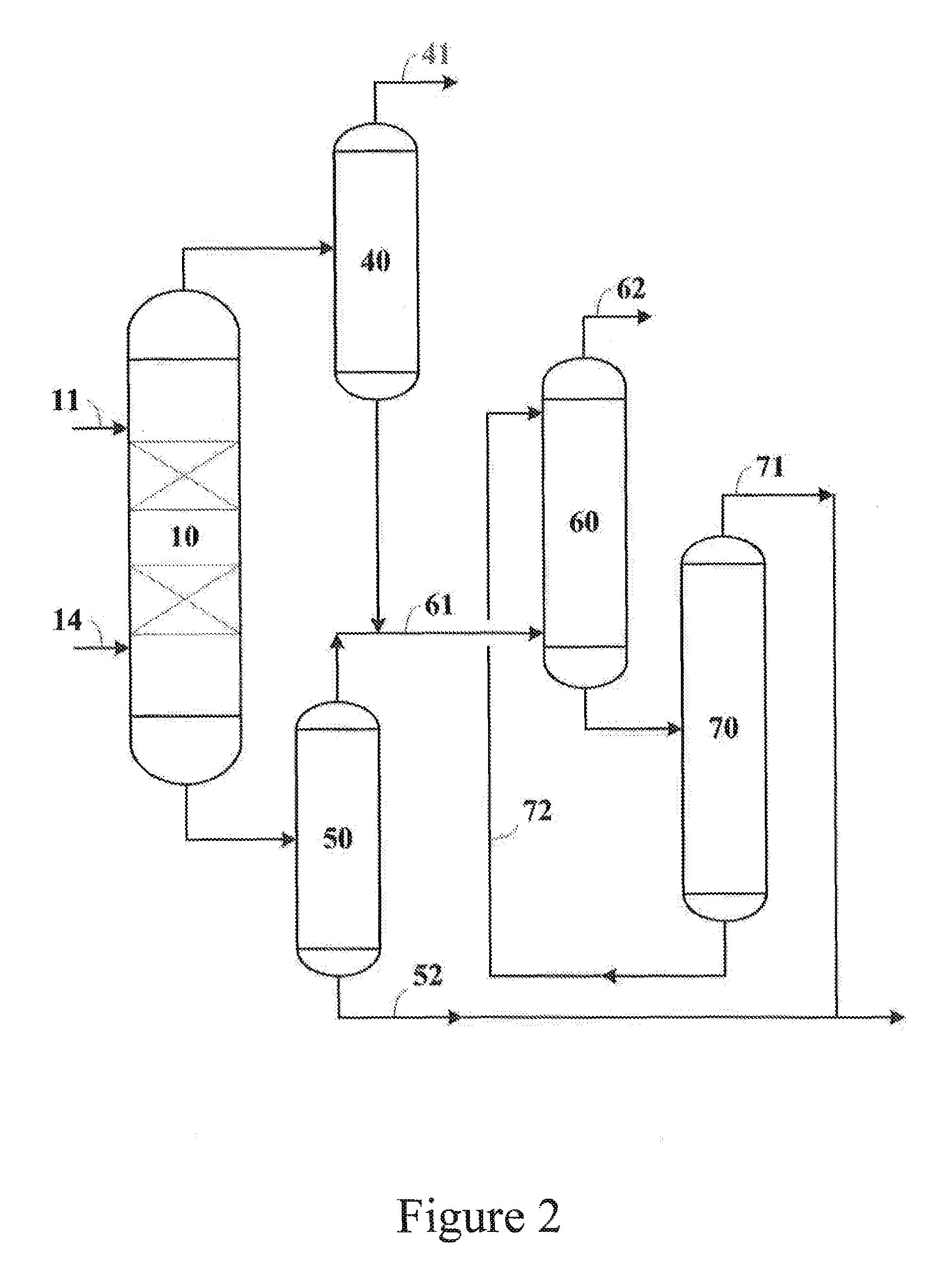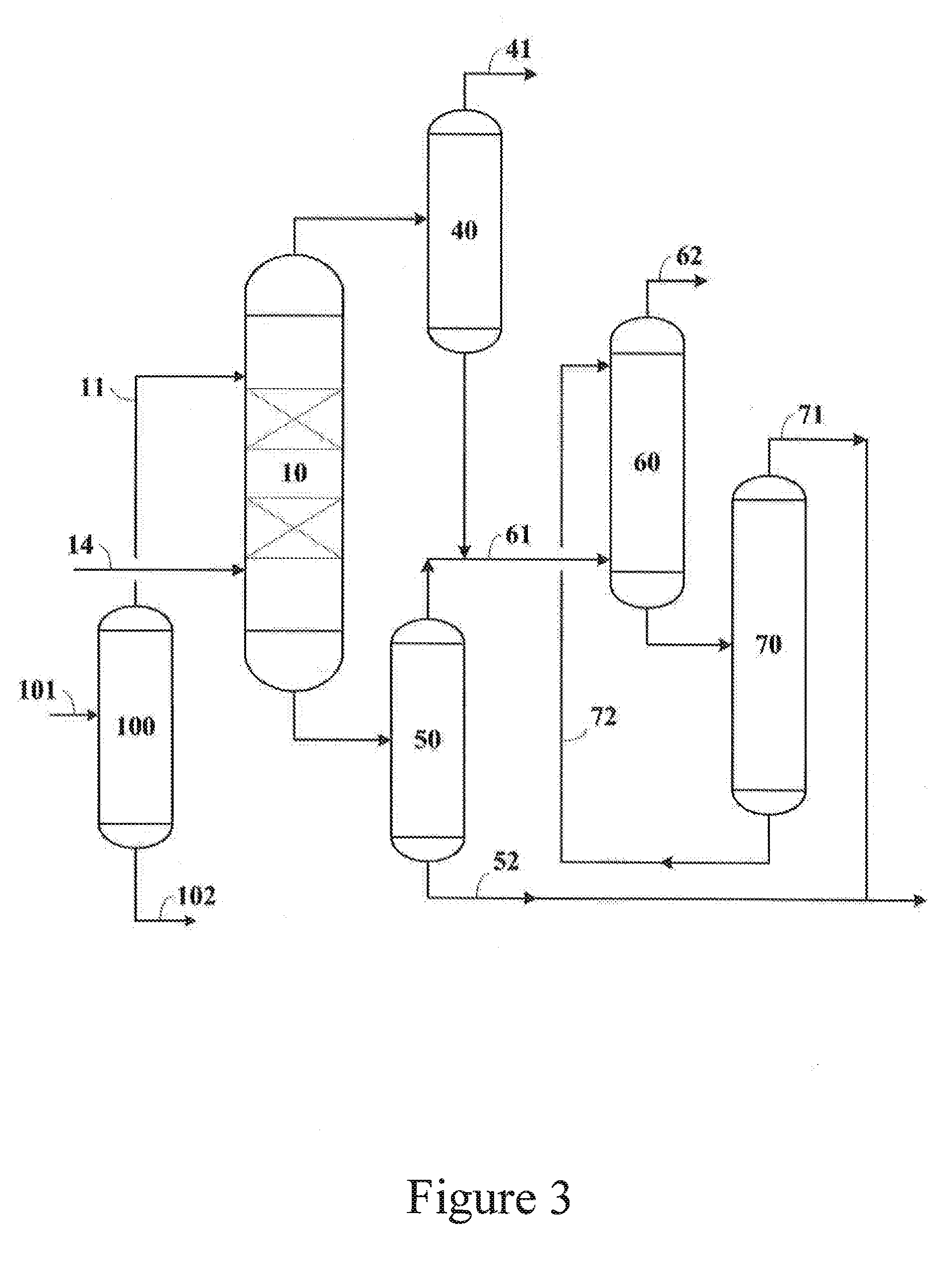Method for coproducing isobutene and ETBE from tert-Butanol mixture
a technology of tert-butanol and co-production method, which is applied in the field of copreparation of isobutene and ethyl tertbutyl ether (etbe), can solve the problems of high cost of isobutene transportation and inconvenient transportation, and achieve the effect of reducing the freezing point of tba and shipping cheaply anywher
- Summary
- Abstract
- Description
- Claims
- Application Information
AI Technical Summary
Benefits of technology
Problems solved by technology
Method used
Image
Examples
example 1
[0040]The solid state TBA (Merck reagent grade, >99.5%) is melted in a water bath at constant temperature of 45° C. 126.1 gram of TBA is weighted and put into a 500 mL of erlenmeyer flask and 6.3 gram of aqueous ethanol (the ethanol-water weight ratio is 92 / 8 wt %) is added to the TBA. The TBA mixture solutions with 5 wt %, 8 wt %, 10 wt % and 15 wt % of aqueous ethanol concentration respectively are obtained. A rubber stopper attached to an alcohol thermometer is used to plug the flask. The flask is moved to a refrigerator circulated with ethanol and gradually cooled down from 20° C. The flask is shaked from time to time. The freezing temperature is decreased 0.5° C. for each time after temperature reaches equilibrium between coolant and the solution. Carefully observe the thermometer and if crystal is formed. Record the crystallizing-out temperature. Repeat one time to measure the cloud point of the TBA mixture. The cloud points of TBA mixed with 5 wt %, 8 wt %, 10 wt % and 15 wt ...
example 2
[0042]This example is a base case for exploring the effects of operating parameters on isobutene selectivity.
[0043]This example demonstrates a co-production process for isobutene and ETBE, where the TBA mixture is used as feed and the supplied fresh absolute ethanol is used as second feed by 0.562 ton / hr. The TBA concentration in the mixture comprising of TBA and 92% aqueous ethanol is 89.3 wt %. The total ethanol-to-TBA molar ratio in the first CD column is 0.25. Other unit parameters of the first CD column are given below. Column pressure is set at 4.5 kg / cm2 and total condenser is subcooled at 43.2° C. As reflux ratio and distillate to feed mass ratio are 3.4 and 0.76, the column size can be determined by these column parameters. Then, the calculated catalyst volume per tray is 0.197 m3. The calculated reaction temperature at the catalytic zone is 113.1-123.0° C. TBA conversion and isobutene selectivity are 99.2% and 89.7%, respectively.
example 3
[0044]This example demonstrates the effect of low ethanol to TBA molar ratio on isobutene selectivity.
[0045]Comparing with Example 2, no supplied fresh absolute ethanol or aqueous ethanol to the first CD column are required. The total ethanol-to-TBA molar ratio in the first CD column is 0.178. Other unit parameters of the first CD column are given below. Column pressure is set at 4.5 kg / cm2 and total condenser is subcooled at 41.6° C. As reflux ratio and distillate to feed mass ratio are 3.0 and 0.75, the column size can be determined by these column parameters. Then, the calculated catalyst volume per tray is 0.178 m3. The calculated reaction temperature at the catalytic zone is 110.0-123.2° C. TBA conversion and isobutene selectivity are 99.2% and 93.4%, respectively.
PUM
| Property | Measurement | Unit |
|---|---|---|
| temperature | aaaaa | aaaaa |
| mass ratio | aaaaa | aaaaa |
| molar ratio | aaaaa | aaaaa |
Abstract
Description
Claims
Application Information
 Login to View More
Login to View More - R&D
- Intellectual Property
- Life Sciences
- Materials
- Tech Scout
- Unparalleled Data Quality
- Higher Quality Content
- 60% Fewer Hallucinations
Browse by: Latest US Patents, China's latest patents, Technical Efficacy Thesaurus, Application Domain, Technology Topic, Popular Technical Reports.
© 2025 PatSnap. All rights reserved.Legal|Privacy policy|Modern Slavery Act Transparency Statement|Sitemap|About US| Contact US: help@patsnap.com



